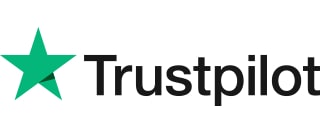If you work for a company that offers a retirement plan, such as a 401(k) or 403(b), you probably have the option of making “traditional” or “Roth” contributions to your account. While having more investment options is a good thing, it might leave you feeling overwhelmed or confused about the benefits of each.
Today, I’ll review critical points about the differences between a traditional and Roth retirement plan at work. You’ll learn who qualifies to participate, how much you can contribute, and how they affect your retirement and taxes.
What is a 401(k) retirement plan?
Only employers can offer a traditional or Roth 401(k) or 403(b) to eligible workers. You may have to reach a certain age, such as 21, or be employed for a period, such as one or six months, to qualify.
Employers can customize certain features of their retirement plans; however, they must comply with the Employee Retirement Income Security Act of 1974 (ERISA). It’s a federal law that sets minimum standards for most workplace retirement plans, which protects participants. Your employer should provide a Summary Plan Description every year, which explains your retirement plan’s features and your rights.
When you enroll in a 401(k), you authorize your employer to automatically deduct elected contributions from your paycheck and send them to your retirement account. If your company offers matching funds, they contribute additional money for free.
An example of a typical 401(k) match is 2% or 3% of your compensation. For instance, if your salary is $40,000 a year, 2% is $800. If you contribute that much, so will your employer, giving you a total contribution of $1,600 ($800 from your paycheck plus $800 from your company). And if you can only contribute $500, your employer contributes $500, for a total contribution of $1,000 for the year. There aren’t many ways to save for retirement that guarantee a 100% return before you even factor in investment returns! So always be sure to participate in a workplace plan and max out matching funds when offered.
Some retirement plans come with a vesting schedule. It’s a period you must remain employed to fully own your matching contributions or other employer-provided funds, such as profit sharing. However, your contributions are always 100% vested. You never forfeit your own money that you put in a retirement account (unless your chosen investments lose money).
The annual 401(k) and 403(b) contribution limits have been slowly increasing every few years, based on IRS rules. For 2021, you can contribute up to $19,500, or $26,000 if you’re over age 50. The high contribution limits, automatic payroll deductions, and free matching make workplace retirement plans popular and useful for growing wealth to spend in retirement.
Differences between traditional and Roth retirement accounts
Now that you understand retirement account basics let’s cover the differences between traditional and Roth accounts.
A traditional retirement account permits pre-tax contributions, which gives you a tax benefit in the year you make them. You don’t pay any income tax on the money you invest. Instead, you pay income tax on your contributions and their investment earnings when you take withdrawals in retirement.
A Roth retirement account requires you to make after-tax contributions, which don’t give you an upfront tax benefit. However, the massive upside is that you take withdrawals of both contributions and earnings that are entirely tax-free in retirement (as long as you’ve owned the account for at least five years).
So, the main difference between traditional and Roth accounts is when you pay taxes. A traditional retirement account helps cut your current income tax bill. And a Roth allows you to avoid income tax when you tap the account in the future.
With a Roth, you’re allowed to withdraw your contributions at any time. That’s because you already paid tax on them. However, if you take out earnings before age 59.5, you must pay a 10% penalty, plus income tax, on the untaxed portion.
The downside of any retirement account is that you get penalized for tapping amounts that weren’t previously taxed before reaching the official retirement age of 59.5.
5 ways a workplace Roth is different from a Roth IRA
Many people mistakenly assume that a Roth is a Roth. It’s important to understand five main differences between a Roth 401(k) and a Roth IRA.
1. Limits on annual income apply to a Roth IRA but not a Roth at work. When your income exceeds yearly limits, you can’t make new contributions to a Roth IRA. For 2021, single taxpayers with income exceeding $140,000 and joint filers with household income over $208,000 get locked out. However, with a Roth 401(k) or 403(b), you can contribute no matter how much you earn.
2. Annual contribution limits for a Roth IRA are much lower than a workplace Roth. For 2021, you can contribute up to $6,000, or $7,000 if you’re over age 50, to all your IRAs. As I previously mentioned, you can contribute a total of up to $19,500, or $26,000 if you’re over 50, to your workplace retirement accounts.
3. Required minimum distributions (RMDs) don’t apply to a Roth IRA. You can keep money in the account indefinitely and pass it along to your heirs. But you must take RMDs from a Roth at work no later than age 72 (unless you’re still employed there). As long as you’ve owned the account for five years, your distributions will be tax-free.
4. Early withdrawals of Roth IRA contributions can be made at any time without triggering income taxes or a penalty. However, taking withdrawals from a Roth at work typically come with conditions, such as experiencing a financial hardship like unpaid medical bills or funeral expenses.
5. Loans are typically permitted for a Roth at work. You must pay your account back with interest on a five-year schedule. However, taking a loan from a Roth IRA isn’t allowed.
So, you can see that a Roth 401(k) and a Roth IRA have similar advantages and have differences in how participants can use them.
Should you choose a traditional or Roth retirement account?
A significant factor in choosing a traditional or a Roth retirement account is the income tax rates in the future and how much you’ll make during retirement. None of us can predict the future, so we have to guess what will be best.
If you prefer a “bird in the hand” to cut taxes sooner rather than later, then a traditional account may appeal to you. But if you don’t mind paying taxes in the current year, then a Roth has more long-term advantages.
When you’re not sure which type to choose, or you want benefits of both types of accounts, you can split contributions between both a Roth and a traditional 401(k) or 403(b) in the same year. You can choose any proportion, such as 50/50 or 20/80, as long as your total doesn’t exceed the allowable annual limit set by the IRS.
If your income is too high for a Roth IRA, having a Roth at work is a terrific benefit. As I mentioned, there are no income limits on a workplace Roth. That means high earners can use one and enjoy tax-free withdrawals in the future.
Having both taxable and non-taxable income in retirement is a good idea. So, instead of deliberating between a traditional or a Roth at work, consider the benefits of using both. If you have employer matching, those contributions are always traditional or pre-tax. So, choosing a Roth 401(k) or 403(b) is an excellent way to diversify your future income and choices.
This article originally appeared on Quick and Dirty Tips.








